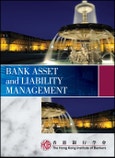Created for banking and finance professionals with a desire to expand their management skillset, this book focuses on how banks manage assets and liabilities, set up governance structures to minimize risks, and approach such critical areas as regulatory disclosures, interest rates, and risk hedging. It was written by the experts at the world-renowned Hong Kong Institute of Bankers, an organization dedicated to providing the international banking community with education and training.
- Explains bank regulations and the relationship with monetary authorities, statements, and disclosures
- Considers the governance structure of banks and how it can be used to manage assets and liabilities
- Offers strategies for managing assets and liabilities in such areas as loan and investment portfolios, deposits, and funds
- Explores capital and liquidity, including current standards under Basel II and Basel III, funding needs, and stress testing
- Presents guidance on managing interest rate risk, hedging, and securitization
Table of Contents
FOREWORD (Bank endorsement)
PREFACE
Part 1: Asset and Liability Management
Chapter 1: Managing Bank Profitability
Learning Objectives
Introduction
1.1 Banking structure and regulation
1.1.1 Mandatory financial disclosure on banks
1.2 Bank financial statements
1.2.1 Income and profit
1.2.2 Off balance sheet items
1.2.3 Non-financial information
1.3 Evaluation of bank profits
1.4 Measuring bank profitability
1.4.1 Interest and non-interest revenues/expenses
1.4.2 Cost of funds, return on equity, return on assets and net interest margin
1.4.3 Different approaches to balance sheet management
1.4.4 Accounting profit vs. economic profit
Summary
List of key terms
Study guide (five questions)
Further reading/websites
Chapter 2: Asset and Liability Management Committee
Learning Objectives
Introduction
2.1 The role and functions of Asset and Liability Management Committee (ALCO)
2.1.1 Asset and liability management
2.1.2 Liquidity and funding risk management
2.2 ALCO plan development
2.3 ALCO pack
2.3.1 Financial ratios
2.3.2 Influence for market strategy
Summary
List of key terms
Study guide (five questions)
Further reading/websites
Chapter 3: Managing Bank Assets and Liabilities
Learning Objectives
Introduction
3.1 Managing bank assets
3.1.1 The loan portfolio
3.1.2 The investment portfolio
3.1.3 Securitization
3.1.4 Liquidity management - assets
3.2 Managing bank liabilities
3.2.1 Sources of funds
3.2.2 Deposit structure
3.2.3 Impact of interest rate changes on net interest spread
3.2.4 Liquidity management - liabilities
Summary
List of key terms
Study guide (five questions)
Further reading/websites
Chapter 4: Banking Regulations
Learning Objectives
Introduction
4.1 Banking regulation and the role of the central monetary authority
4.2 Roles of HKMA
4.2.1 RTGS
4.2.2 Intra-day repo
4.2.3 Discount window
Summary
List of key terms
Study guide (five questions)
Further reading/websites
Part 2: Managing Liquidity Risk and Interest Rate Risk
Chapter 5: Capital and Liquidity Management
Learning Objectives
Introduction
5.1 Definitition and functions of capital, standards of capital adequacy under Basel II/III
5.1.1 Measurement of capital adequacy
5.1.2 Tier 1 (Core) and Tier 2 (supplemental) capital requirements, capital planning
5.2 Determining a bank’s funding needs
5.2.1 Meeting legal reserve requirements
5.2.2 Loan and deposit trend forecasts
5.2.3 Liquidity gap estimation
5.2.4 Liquidity planning
5.3 Stress testing
5.3.1 Capital and liquidity management policies
Summary
List of key terms
Study guide (five questions)
Further reading/websites
Chapter 6: Managing Interest Rate Risk
Learning Objectives
Introduction
6.1 Types of interest rate risk
6.2 GAP analysis
6.3 Duration analysis
6.4 Basis point value (BPV)
6.5 Hedging interest rate risk
6.6 Syndication capital management
6.7 Securitization
6.7.1 Liquidity management
6.7.2 Asset management
6.7.3 Capital management
6.8 Net interest income sensitivity analysis
Summary
List of key terms
Study guide (five questions)
Further reading/websites
Chapter 7: Long Term Market Risk
Learning Objectives
Introduction
7.1 Long term risks
Summary
List of key terms
Study guide (five questions)
Further reading/websites
Glossary
Index








